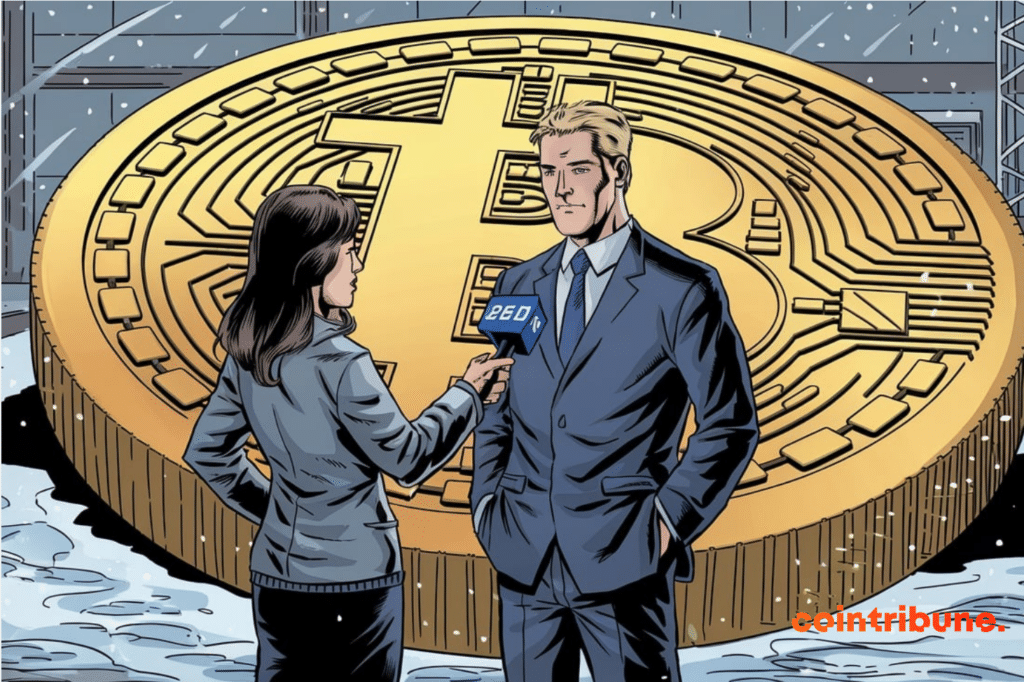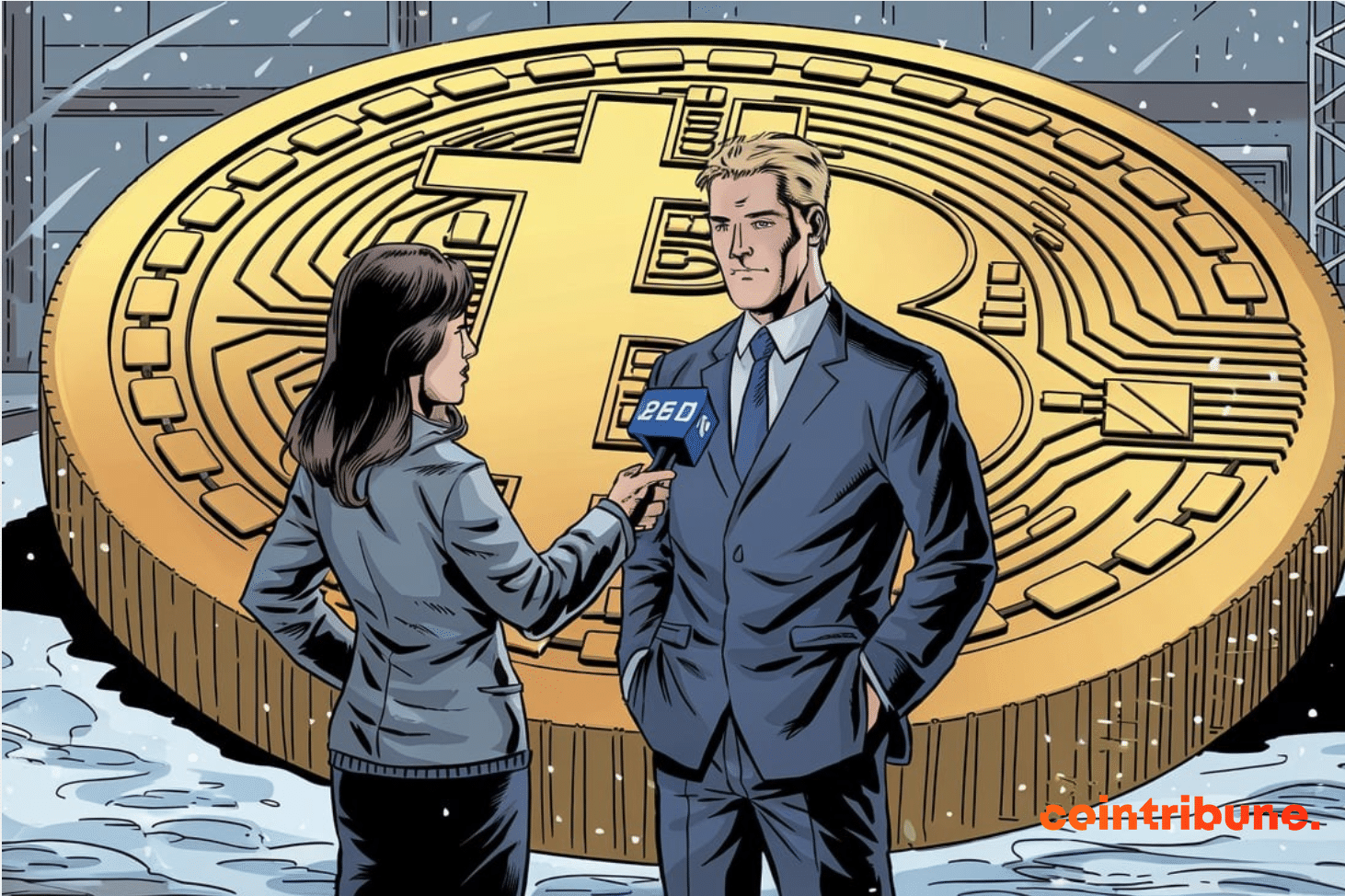16:05 ▪
10
min reading ▪ acc
Cointribune interviewed Anti Danilevski. He is the CEO of Kickex, an exchange platform operating in Russia. We talked about Western sanctions against Russia, BRICS and what the future holds for Bitcoin.

Is bitcoin popular in Russia?
The Bitcoin industry is significant in Russia. The country ranks second worldwide in electricity consumption dedicated to this activity. Big government entities have partnered with some bitcoin mining companies (I won’t say which ones out of discretion) to mine themselves. As a result, the industry is sizeable and expected to grow further by 2025.
Is it fair to say that about 12% of the hashrate comes from Russia?
No, Russia’s actual hashrate is 17%. But do not forget that a large number of Russian miners have companies in the United Arab Emirates or Hong Kong and rent hash power from their own companies in Russia. So the real hashrate (in my opinion) is around 23-25%. This number will increase even more now that the government has legalized the industry. I expect many Chinese miners to settle in Russia soon.
What about mainstream bitcoin adoption?
Not sure how many Russians own BTC. Nobody really knows. I think there are about 4-4.5 million holders compared to the total population of 150 million Russians. As for paying with bitcoins, this is almost not the case due to its volatility.
The West has disconnected Russia from the Swift network. Has this sparked a renewed interest in Bitcoin?
In Russia, while there is significant adoption of cryptocurrencies in general, it is more difficult to accurately determine the number of people who specifically hold bitcoins. The widespread use of cryptocurrencies in Russia is largely due to the need to transfer money abroad due to sanctions and challenges posed by international financial restrictions. Many Russians, especially IT specialists and their families living abroad in countries like Thailand or Bali, have turned to cryptocurrencies to send and receive money.
This necessity has led to an unprecedented level of cryptocurrency adoption in Russia. Millions of people have become familiar with various cryptocurrencies. However, not all of these users are focused solely on Bitcoin. Many use a variety of cryptocurrencies for their transactions, of course preferring stablecoins over BTC.
The sanctions had an incredibly positive impact on Russia. It’s not just about cryptocurrencies. Everything is affected: software, hardware, refurbished factories and more. Beginning in the 1980s, the Russian government under Gorbachev and Yeltsin decided to rely heavily on imports, which led to the destruction of almost all domestic industries. Russia has become dependent on imports and relies on other countries for almost everything.
Sanctions opened our eyes and in just 2-3 years we were able to stop an incredible amount of imports with domestic production. The growth of cryptocurrency adoption and friendlier legislation is just one aspect of the effort to increase our economic resilience.
Sanctions have also strengthened ties within BRICS. Russia took over the presidency of the group this year. What should we expect from the Kazan meeting in October regarding the international monetary system?
BRICS are working on their own payment system. They have the idea to create a replacement for the SWIFT network. They could also announce a new common BRICS currency (the working name is GDR). But there is already an alternative to SWIFT in Russia. However, international banks do not accept it for fear of American reprisals, i.e. closing their vostro accounts in USD.
So I don’t really expect anything new. Everything is already known and it will take years to build this parallel financial system.
Do you think bitcoin is taken seriously among the BRICS?
Not by central banks. Not because it is “bad”, but rather because of its volatility. It is impossible for “serious” companies to transact in BTC.
Why shouldn’t private banks use bitcoin as an international payment system?
Because their contracts are in dollars, rubles or yuan. Imagine you bought 10 BTC for $600,000 to complete a trade, and an hour later those BTC are only worth $500,000. So you have to buy another $100,000. These risks are unacceptable for large companies.
Will Bitcoin Volatility Ever Be Acceptable? A Russian bank recently launched an experimental payment platform using cryptocurrencies to circumvent sanctions. What cryptocurrencies will be used?
I don’t think this will ever become acceptable, Bitcoin will always remain volatile. Only stablecoins would work for payments.
There is a chance that lightning BTC could be used if fiat – BTC – fiat conversations were really fast and with a fixed and predefined exchange rate.
Is the Lightning Network something the Russian Central Bank is testing on oil imports and exports?
No, they don’t know what Lightning Network is, that’s for sure. It makes no difference to them, BTC is BTC.
Russia recently resumed gold purchases. Is a gold-backed stablecoin the most popular option being considered to compete with the dollar?
Stablecoin in Russia is discussed theoretically. In practice, there is no stablecoin law yet. Yesterday I attended a conference, we talked about this with one of the finance ministers of Russia. A law is being prepared. When and if it will ever see the light of day, but no one knows yet.
I said it was inevitable: Tether will continue to freeze the wallets of sanctioned companies and BTC is too volatile. Russian international trading with US stablecoins is VERY risky. Russia needs its own stablecoin. The government agrees with my opinion.
I will visit our central bank this week or next and we will talk about this again. Maybe I can do it, we’ll see.
You’re kind of advocating international bitcoin transactions through the Lightning Network, and you immediately settled on Russian stablecoins to avoid the volatility issue, right?
In a way, yes.
Bitcoin is not only an uncensorable payment system, it is also a store of value. It seems that Donald Trump wants to support the US dollar with this. Should we expect Russia and China to eventually follow suit?
IMHO there is 0% chance of that happening.
Why not when they are already buying gold and other precious metals to bolster their reserves?
They understand gold but not cryptocurrencies and are very afraid of volatility. Moreover, as one of the Duma deputies said, “The internet was developed in the United States, so it is dangerous and we should not use a currency controlled by the United States”. Need we say more…
Thank you for your time, Mr. Danilevski. Finally, could you tell us what you think the best case scenario for Bitcoin could be in the next 5 years?
It is very difficult to predict, but I believe it will grow significantly. The recent halving will soon begin to manifest itself, and we will have another halving in 3.5 years. So I expect the price of BTC to be around $200,000-250,000. I think BTC is the best long-term anti-inflation asset. It will increasingly be used as a means of storing value and keeping it safe. Everyone here is now thinking about how to buy cryptocurrencies, those who have never thought about it before. So we’re just at the very beginning and the adoption hasn’t started yet.
Maximize your Cointribune experience with our “Read and Earn” program! Earn points for every article you read and get access to exclusive rewards. Register now and start reaping the benefits.
Report on Bitcoin, “Goddess of wisdom, feeding on the fire of truth, exponentially smarter, faster and stronger behind a wall of encrypted energy”.
DISCLAIMER OF LIABILITY
The comments and opinions expressed in this article are solely those of the author and should not be considered investment advice. Before making any investment decision, do your own research.
